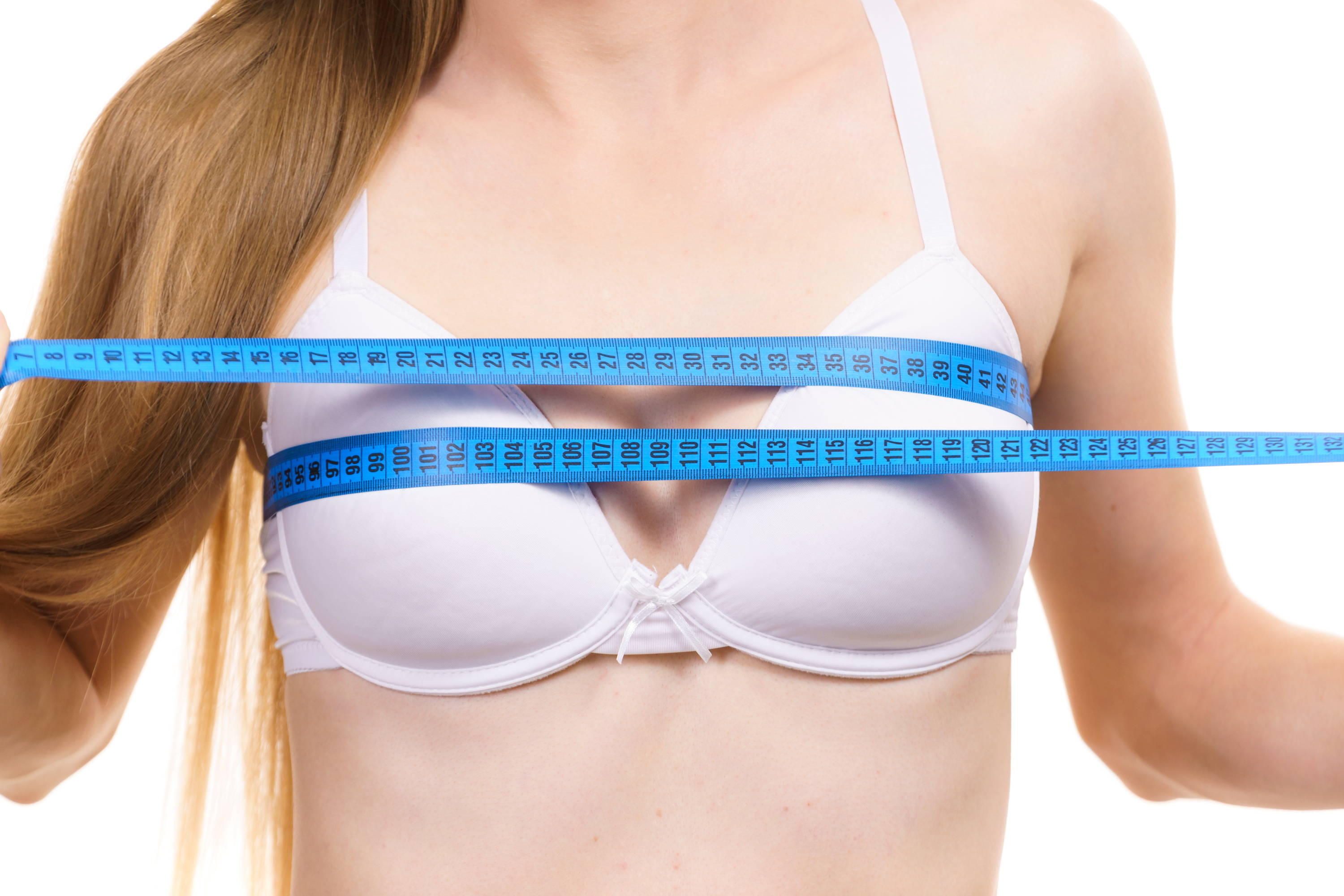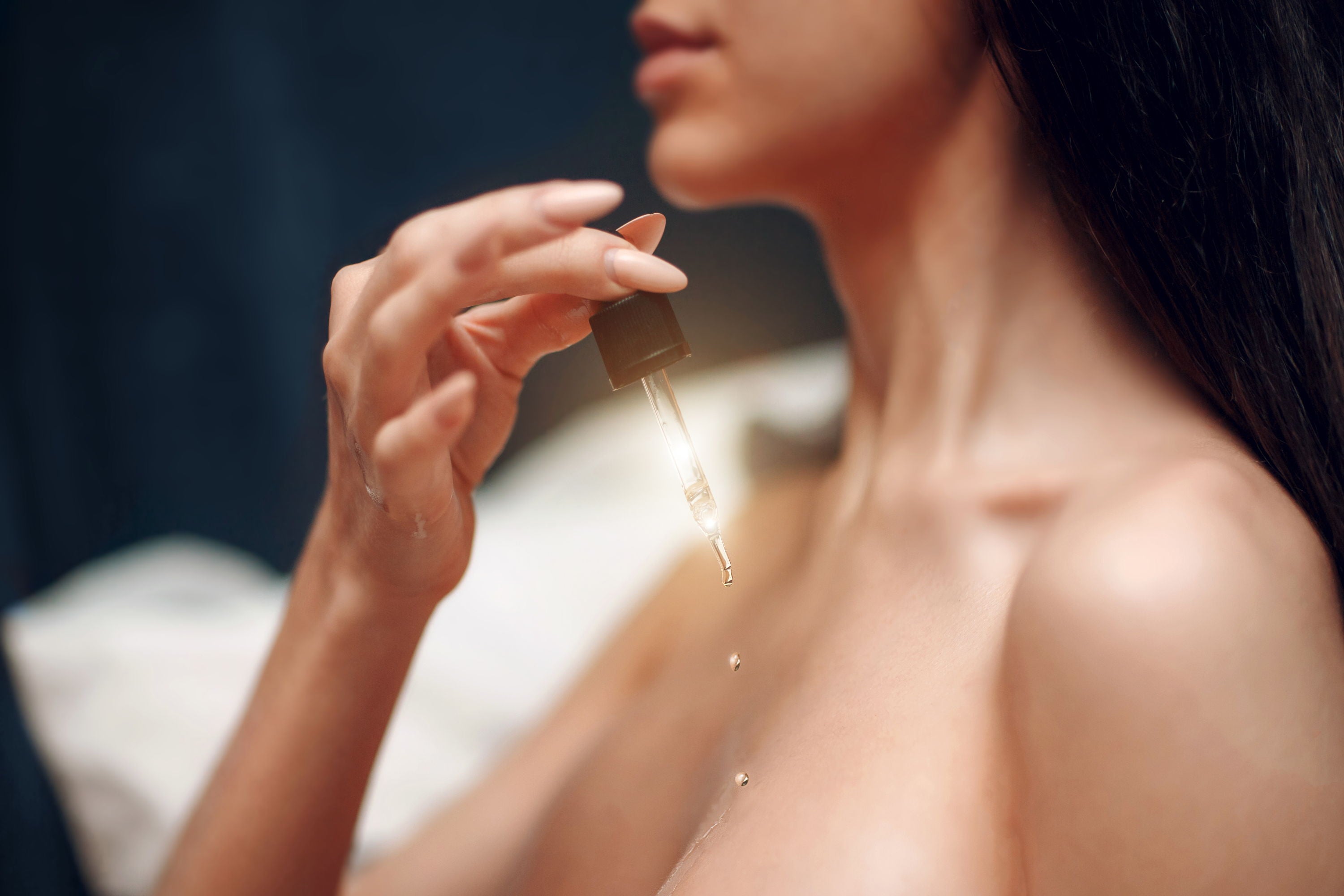Identify If You Have Low Estrogen and Treat It Naturally
Identify If You Have Low Estrogen and Treat It Naturally
Low estrogen levels are most common in women who are approaching menopause. And still, note that women of any age can experience low estrogen symptoms.
Understanding the causes, symptoms, and risks associated with low estrogen levels will help to determine the best treatment options available.
According to one study, estrogen and progesterone levels tend to go down in women who are overweight. Conversely, getting rid of excess weight may help to bring estrogen levels up.
According to one study, estrogen and progesterone levels tend to go down in women who are overweight. Conversely, getting rid of excess weight may help to bring estrogen levels up.
PHYTOESTROGENS GROCERY LIST
PHYTOESTROGENS GROCERY LIST
Table of Contents
- 1. NATURAL VASODILATORS GROCERY LIST
- 2. Why Natural Vasodilators?
- 3. Blood Flow Supporting Foods
- Cayenne Pepper and Chili
- Citrus Fruits
- Dark Chocolate and Raw Caca
- Ginger
- Black Ginger
- Garlic
- Watermelon
- Tea
- Pomegranate
- Walnuts, Pistachios, Peanuts and Most Other Nuts
- Red Wine and Grapes
- Beetroot
- Spinach
- Raw Honey
- Kale
- Shrimp
2. Symptoms of Low Estrogen Levels
4. Impact of Low Estrogen Levels in Women
6. How Is Low Estrogen Diagnosed?
7. Treatments for Low Estrogen
1. Natural Remedies for Low Estrogen
Maintain a Healthy Body Weight
Exercise Properly and Get Plenty of Rest
Eat Foods That Naturally Have Estrogen
2. Symptoms of Low Estrogen Levels
4. Impact of Low Estrogen Levels in Women
6. How Is Low Estrogen Diagnosed?
7. Treatments for Low Estrogen
1. Natural Remedies for Low Estrogen
Maintain a Healthy Body Weight
Exercise Properly and Get Plenty of Rest
Eat Foods That Naturally Have Estrogen
What is Estrogen?
What is Estrogen?
Estrogen is the general name for a group of female sex hormones that counter balance the male sex hormones (testosterone, DHT, and others). Both men and women produce estrogen and testosterone, though in different amounts.
A decline in estrogen production in women can lead to a wide range of health issues. That is why identifying its symptoms and understanding its causes is essential for early and effective treatment.
Until Special Offer Expires
100% Money Back Guarantee
The Functions of Estrogen
The Functions of Estrogen
In women, estrogen is produced in the ovaries. Conversely, just 20% of estrogen in men is produced directly in the testicles while the remaining 80% is made by transforming testosterone into female hormones.
Although estrogen is produced naturally in the body, this isn’t the only source of this hormone. There are certain types of estrogen-like compounds that are produced by plants (phytoestrogens) and synthetic hormonal disruptors with estrogen-like properties (xenoestrogens, i.e. some types of plastic).
Here are some of the functions of this hormone—particularly in women:
- Controls the changes in the breast that happen during pregnancy and in adolescence
- Takes part in weight management
- Responsible for sexual development in young girls when they reach puberty
- Menstrual cycle regulation
- Controls the growth of the uterine lining
- Controls bone tissue development
- Promotes cardiovascular health
- Helps regulate insulin sensitivity
- Supports the absorption and retention of calcium
- Aids in the metabolism of glucose
Symptoms of Low Estrogen Levels
Symptoms of Low Estrogen Levels
Women experience low estrogen levels and all the related symptoms when they approach menopause.
Some of the most common symptoms of low estrogen levels include the following:
- Fatigue
- Night sweats
- Trouble concentrating
- Insomnia
- Depression
- Headaches
- Vaginal dryness
- Weight gain
- Increasing migraine symptoms
- Tenderness in the breasts
- Osteoporosis (bone weakness)
- Hot flashes
- Mood swings
- Absent or irregular periods
- Increased frequency of urinary tract infections
- Pain during sexual intercourse
There are other symptoms as well that you should also be mindful of. For instance, women with low estrogen levels also tend to suffer from bone fractures more often.
This is because lower secretions of estrogen may contribute to reduced bone density.
Do take note that older women who may be experiencing these symptoms may need to supplement with calcium, vitamin D, and other essential nutrients for stronger bones.
Are there complications to reduced estrogen levels in women? There is in fact at least one—it may contribute to infertility.
Causes of Low Estrogen
Causes of Low Estrogen
There are many possible causes for the decrease in estrogen production in women. For instance, any damage that may have been caused to the ovaries can immediately have an impact on estrogen levels.
And still, the most common factor that causes low estrogen levels is a woman’s age. It is very normal for women to experience a drop in estrogen levels as they approach menopause.
In fact, women may experience a reduction in estrogen levels in an earlier period of their lives called perimenopause. This occurs several years before a woman enters into the menopausal stage.
Note that women over the age of 40 may already be experiencing symptoms of reduced estrogen production. This is usually the age when perimenopause begins.
Note that a woman’s ovaries will still continue to produce estrogen, but production will gradually go slower over time. After menopause sets in, women’s ovaries will no longer produce estrogen.
Here are some of the other potential causes of low estrogen levels in women:
- Too much exercise
- Thyroid disorders
- Anorexia and other eating disorders
- Being severely underweight
- Health issues of the pituitary gland
- Chemotherapy
- Premature ovarian failure
- Turner syndrome
- Chronic kidney disease
Note that if you have hormonal problems in your family history then that may also contribute to the development of low estrogen levels.
Impact of Low Estrogen Levels in Women
Impact of Low Estrogen Levels in Women
Remember that estrogen and other hormones have a strong impact on weight management. Simply put, they can affect how the body stores fat.
It is possible that reduced estrogen production during perimenopause and in menopause may cause weight gain in women.
According to one study, the way a woman’s body stores fat changes when she reaches perimenopause. The female body usually stores fat in the thighs and hips.
During midlife and the years leading to menopause, the body switches the fat stores from the hips and thighs to the abdomen, which is why women tend to gain more abdominal fat as they get older.
As a woman reaches the stage of menopause, she may notice that she is getting more frequent urinary tract infections. This is because the tissues that are lining the urethra are getting thin.
This thinning of the urethral lining is due to the reduction of estrogen.
Estrogen also regulates the production of the feel good hormone called serotonin. With the reduced production of this mood boosting hormone, women tend to feel more depressed—and more frequently so.
Estrogen also regulates the amount of vaginal lubrication. With the reduced estrogen levels, vaginal secretion rates drop and result in dryness. This, in turn, may lead to pain and discomfort during sex.
Low Estrogen Risk Factors
Low Estrogen Risk Factors
After considering the causes, the following are the risk factors for developing low estrogen levels:
- Having any issues with your pituitary gland
- Exercising too much
- Undergoing extreme diets
- Having eating disorders like anorexia
- Family history with ovarian cysts and other hormonal issues
- Age
How Is Low Estrogen Diagnosed?
How Is Low Estrogen Diagnosed?
As with any other health condition, early diagnosis of low estrogen can help you find the best treatment for any of the related symptoms mentioned above. Having said that, if you experienced any of these unpleasant symptoms, make sure to consult with your doctor as soon as possible.
These preventive consultations will help make things easier for you as you approach menopause as well. It will also help prevent any further complications that are associated with this medical condition.
Apart from a physical exam, your doctor will also want to discuss your family history with you. Together with your medical history, your doctor will assess the symptoms that you are currently experiencing.
Apart from the physical exam, your doctor will also request some lab work for you, such as blood tests that will help to determine your current hormonal levels.
The blood work will be very useful at determining your current estrogen levels. Your doctor will also test your estradiol and estrone levels.
Your doctor will require these tests in case you are experiencing any of the following symptoms:
- Missed periods
- Insomnia
- Night sweats
- Hot flashes
Note that these are symptoms of menopause. There are other tests that your doctor may recommend as well.
Your doctor will also check for other potential underlying conditions. Examinations may also be conducted to check for pituitary disorders and/or thyroid disease.
For instance, your doctor may also recommend brain scans. Don’t worry; it will be used to determine any conditions that may be affecting the way your endocrine system is functioning.
If a brain scan is not possible, then your doctor may recommend DNA tests instead. These tests can also help determine the current state of your endocrine system.
Treatments for Low Estrogen
Treatments for Low Estrogen
After a thorough examination, your doctor can prescribe a treatment that best suits your current condition. Remember that there are natural remedies that you can opt for and there are medical interventions as well.
We’ll go over the different options that can be made available to you. Let’s start with the natural remedies.
1. Natural Remedies for Low Estrogen
Natural Remedies for Low Estrogen
• Maintain a Healthy Body Weight
• Maintain a Healthy Body Weight
According to one study, estrogen and progesterone levels tend to go down in women who are overweight. Conversely, getting rid of excess weight may help to bring estrogen levels up.
• Exercise Properly and Get Plenty of Rest
• Exercise Properly and Get Plenty of Rest
Exercise is great for the body, however, when you overdo it then it can affect your estrogen levels. Too much exercise can reduce the amount of estrogen that your body makes.
According to one study, post-menopausal women who do a total of three hours of moderate exercise each week may find a reduction in the estrogen levels circulating in their body.
The goal is to exercise at moderate levels and not for extended periods of time.
• Eat Foods That Naturally Have Estrogen
• Eat Foods That Naturally Have Estrogen
Certain foods like soy contain natural estrogens.
If you want to try this option, it is still best to talk to your doctor before adding estrogen rich food in your diet.
2. Hormone Replacement Therapy (HRT)
Hormone Replacement Therapy (HRT)
Hormone replacement therapy or HRT is one of the most commonly recommended treatments for low estrogen levels and the treatment of unpleasant menopause symptoms.
HRT is the process of restoring the body’s missing hormones. Doctors may recommend HRT especially to women who are at perimenopause or those who are already approaching menopause.
Note that both progesterone and estrogen levels tend to go down when women reach the age of 40 and older. Think of HRT as a medical form of supplementing the body with the needed hormones.
There are several modes by which these essential hormones can be administered. They include the following options:
- Vaginal
- Sub-dermal, in the form of pellets that are inserted under the skin
- Injections
- Creams and patches
- Oral (i.e. tablets or capsules)
Remember that your doctor can adjust your HRT treatment as needed. The combination of hormones, the duration of the treatment, and the dosages can be changed according to how your body responds.
Note that in many instances, you will not only take estrogen during the course of an HRT treatment. Depending on your doctor’s diagnosis, your HRT treatment may also include a combination of progesterone and estrogen with varying doses.
• HRT Side Effects
• HRT Side Effects
You should consider discussing hormone replacement therapy thoroughly with your doctor. This is due to the fact that there are certain risks associated with HRT.
For instance, according to one study, menopausal women who have hormonal replacement therapy may be at a higher risk for developing cardiovascular disease.
There are also other risks associated with HRT, such as the following:
- It may increase one’s risk for breast cancer
- According to a 10 year study, women who undergo HRT may also be at a higher risk for stroke
- It also increases one’s risk for stroke
• Alternative to HRT
• Alternative to HRT
Take note that when you undergo hormone replacement therapy, you will most likely be using synthetic hormone substitutes. As it has been pointed out, it is effective but it does carry with it certain risks and side effects.
If you want to get the same benefits but avoid the side effects associate with HRT, then we recommend that you try using phytoestrogens like pueraria mirifica extracts.
Using phytoestrogen serums like pueraria mirifica from Mirifica Science can be just as effective. Studies confirm that pueraria mirifica can be therapeutic for the treatment of symptoms related to menopause and estrogen deficiency.
Phytoestrogens extracted from pueraria mirifica also help relieve and treat symptoms of low estrogen. It can provide the following benefits:
- Improves skin hydration, which can be experienced by menopausal women
- It can be used as a kind of hormonal breast augmentation
- Reduces vaginal dryness
- Reduces climax symptoms
- It helps to reduce the pain that women with low estrogen experience during sexual intercourse
- Improves bone health
- Aids in the reduction of bone loss (osteoporosis)
- Reduces other menopausal/estrogen deficiency symptoms
Using phytoestrogen serums like pueraria mirifica from Mirifica Science can be just as effective. Studies confirm that pueraria mirifica can be therapeutic for the treatment of symptoms related to menopause and estrogen deficiency.
Using phytoestrogen serums like pueraria mirifica from Mirifica Science can be just as effective. Studies confirm that pueraria mirifica can be therapeutic for the treatment of symptoms related to menopause and estrogen deficiency.
PUERARIA MIRIFICA
WHAT DOES THE RESEARCH SAY?
Conclusion
Conclusion
If you’re interested in a natural solution to low estrogen symptoms minus the usual side effects, you may want to try Pueraria Mirifica extracts. There are different serums and other solutions available.
For instance, if you need to treat facial symptoms of low estrogen, then try a phytoestrogen facial serum. In case you are experiencing bust problems due to estrogen deficiency, there are bust care serums made from pueraria mirifica extracts as well.
All our products are research-backed. We spend countless hours reading through clinical
research to make sure our products do exactly what we say they will.
That's why we take responsibility for all the risk and guarantee you'll get results. If not, you're protected by an ironclad 60-day money-back
guarantee.
Simply put, if our products don't work for you, let us know and we'll refund you
everything. No questions asked.
ONLY THE BEST EARTH GROWN NUTRIENTS
*These statements have not been evaluated by the FDA. Products are not intended to diagnose, treat, cure or prevent any disease.
The information on this website has not been evaluated by the Food & Drug Administration or any other medical body. We do not aim to diagnose, treat, cure or prevent any illness or disease. Information is shared for educational purposes only. You must consult your doctor before acting on any content on this website, especially if you are pregnant, nursing, taking medication or have a medical condition.





